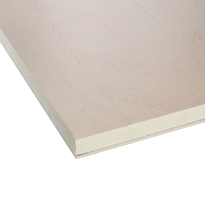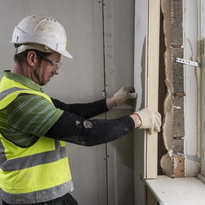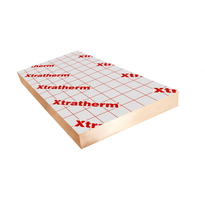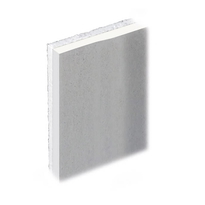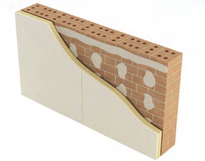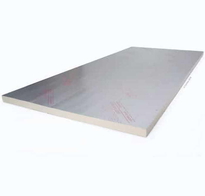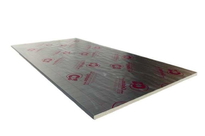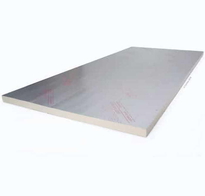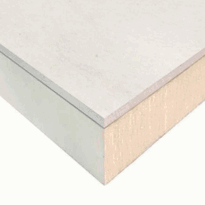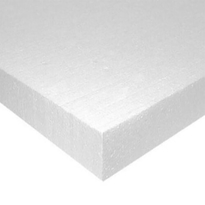Choosing the Right Insulation Material for Loft Doors
Selecting the appropriate insulation material for loft doors involves careful consideration of several important factors. These include thermal performance, environmental impact, budget constraints, and the unique characteristics of the installation site. Different insulation materials have varying R-values, which indicate their effectiveness at resisting heat flow. Recycled paper insulation, crafted from recycled paper products, provides good thermal insulation, fire resistance, and soundproofing qualities. However, it's susceptible to moisture, so proper installation and adequate vapour barriers are essential to prevent dampness. Fibreglass insulation is a popular choice due to its affordability and ease of installation. It offers reasonable thermal performance but may not be suitable for more demanding environments or extreme conditions. Foam insulation delivers superior thermal insulation properties, contributing to energy efficiency. It typically involves higher costs and generally requires professional installation to ensure optimal performance and safety. Mineral wool is an eco-friendly, durable insulation material that performs well across a variety of environments. Its resistance to fire, mould, and moisture makes it a durable and sustainable choice. Reflective insulation works by reflecting heat away from the loft space rather than absorbing it. It's most effective in situations where controlling heat transfer is a priority, especially in warmer months. When choosing an insulation material, it's crucial to assess each option’s characteristics carefully. Striking a balance between energy efficiency, sustainability, and budget will help you find a solution that meets the specific needs of your property and its occupants.
Effective Installation Strategies for Loft Door Insulation
Implementing effective insulation strategies for loft doors requires careful planning and precise execution to ensure optimal thermal performance and energy efficiency. First, take accurate measurements of the loft door to determine the correct size of insulation materials needed. When installing, always use appropriate safety equipment such as gloves, eye protection, and a sturdy ladder. Select suitable insulation types, including fibre glass batts, foam boards, or reflective foil, depending on the specific application and suitability for the climate. When cutting the insulation, use a utility knife, measuring tape, and a straight-edge to achieve precise edges that fit tightly without gaps or overlaps. Secure foam boards with a suitable adhesive designed for insulation materials, and firmly staple fibre glass batts in place to prevent movement. Finally, seal all gaps around the door frame using weatherstripping or draught-proofing strips. This step is vital to prevent draughts and maintain consistent insulation performance, thereby enhancing the overall energy efficiency and operational integrity of the loft space. Proper sealing is essential because even small gaps can significantly reduce insulation effectiveness and increase energy costs.
Enhancing Airtightness and Energy Efficiency
Enhancing Airtightness and Energy Efficiency
Improving the airtightness of loft doors is essential in reducing air leaks, which can significantly impact energy efficiency in residential properties. Proper sealing of gaps and cracks prevents unwanted airflow, helping to decrease heat loss during the winter and heat gain in the summer months. Conducting airtightness tests, such as blower door tests, allows for an assessment of air leakage levels, with lower measurements indicating better performance. Sealing leaks and adding insulation can lead to an average of 15% savings on heating and cooling costs. Using insulation materials with high thermal resistance, reflected by low U-values, enhances the home's ability to maintain consistent internal temperatures.
Achieving greater airtightness and effective insulation can lead to substantial energy savings, often reducing heating and cooling costs by up to 15%. Additionally, improved sealing and insulation can extend the lifespan of HVAC systems, decrease overall energy consumption, and support environmental conservation efforts.
Making these enhancements not only results in a more comfortable living environment but also offers long-term financial benefits, contributing to a more sustainable and cost-efficient home.
Safety Tips and Best Practices for Insulating Loft Doors
Safety Tips and Best Practices for Insulating Loft Doors
Ensuring safety during the insulation process for loft doors requires careful attention to a range of precautionary measures that protect both individuals and property. Personal protective equipment such as dust masks guard against inhalation of particles, while securing electrical components prevents potential hazards. Maintaining proper ventilation ensures good airflow, minimising moisture buildup. Decluttering the work area reduces tripping risks, and adhering to local building regulations guarantees compliance with safety standards. Additionally, following safety protocols is essential to minimise the risk of injuries or accidents during installation.
| Safety Measures | Best Practices |
|---|---|
| Wear PPE consistently | Check ventilation systems before starting |
| Secure electrical components | Follow manufacturer instructions precisely |
| Clear debris | Seal gaps around the door to prevent air leaks |
| Use appropriate tools | Maintain a tidy workspace to avoid accidents |
| Comply with regulations | Conduct regular system inspections after installation |
Conclusion
Choosing the right insulation material, applying correct installation techniques, and ensuring effective sealing are key to maximising energy efficiency in loft doors. Careful attention to safety and adherence to best practices help prevent hazards and enhance performance. By adopting a systematic approach that includes thorough preparation, precise application, and ongoing inspection, homeowners can achieve optimal insulation results. This comprehensive process reduces energy costs, increases comfort, and maintains the structural integrity of the loft space over time.
